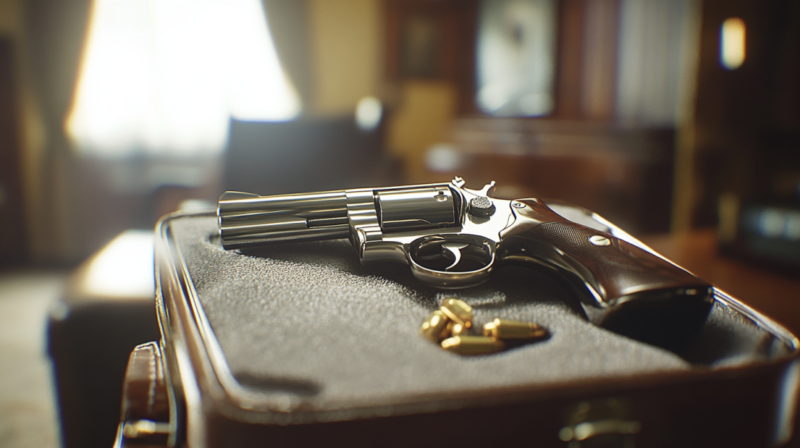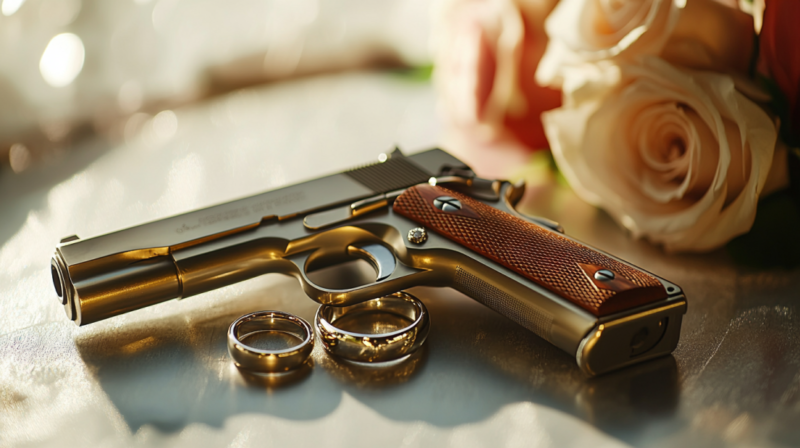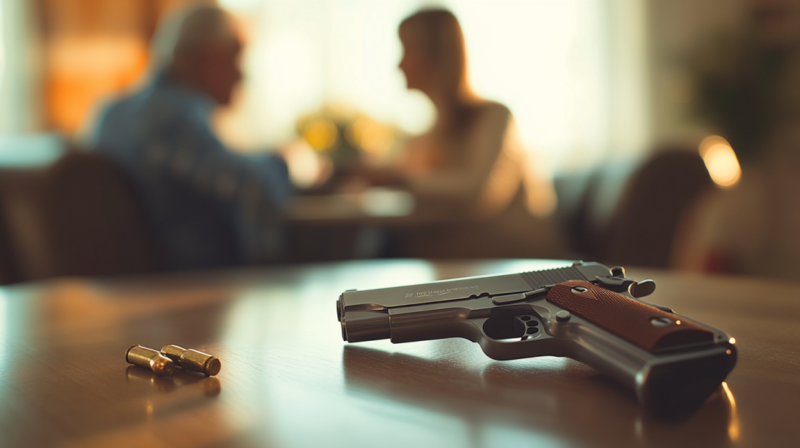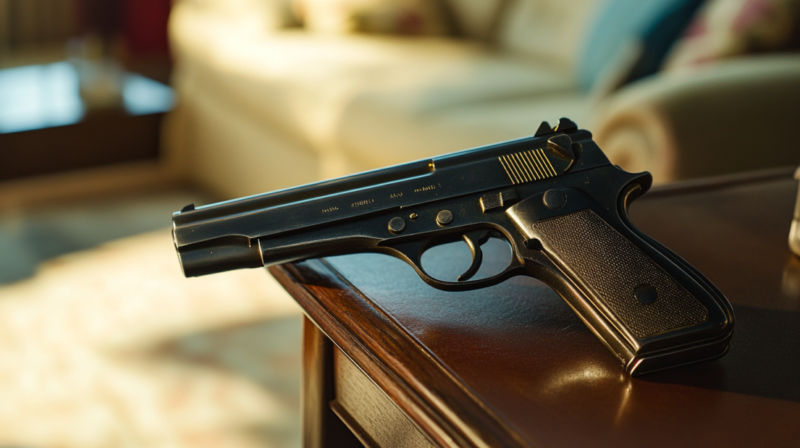Gun ownership in the U.S. is a significant aspect of many households, impacting various legal considerations, including divorce.
When couples decide to separate, understanding how firearms fit into marital property laws can be essential.
Guns, whether acquired during the marriage or brought into the union by one spouse, often have both financial and emotional value, making them a unique part of asset division.
For divorcing couples, knowing how gun ownership will be handled in divorce proceedings ensures a smoother process, prioritizing both safety and fairness.
Factors Affecting Gun Division in Divorce

When courts address gun division in divorce cases, they consider several key factors to ensure a fair and safe outcome.
These factors include the economic value of firearms, safety concerns, and considerations related to children:
1. Economic Value of Firearms
The financial worth of guns, particularly collectible or high-value firearms, plays a crucial role in asset division.
Courts may require a fair appraisal to accurately assess the value of each firearm, allowing for a more balanced division.
The economic factor ensures that valuable firearms are appropriately accounted for within the broader context of asset distribution.
2. Safety Concerns

Safety is a primary consideration, especially in cases involving domestic violence or when one spouse expresses concerns about potential harm.
Courts often respond to these safety issues by restricting or transferring firearm ownership to mitigate risks, prioritizing the well-being of both parties.
The measure is especially significant in contentious divorces where firearms may intensify personal safety concerns. If you want to learn more about this, check here.
3. Children’s Access and Safety
The presence of children in the household further impacts decisions surrounding firearm division.
Courts prioritize the safety of minors, aiming to prevent any potential for unsupervised access to guns.
In such cases, courts may award firearm ownership in a way that minimizes risks to children, ensuring responsible and secure storage arrangements.
Determining Who Gets the Guns

The process of dividing firearms in divorce depends on state-specific property division laws, which can vary significantly:
Community Property States
- Assets acquired during the marriage are divided equally between both spouses.
- This includes any guns classified as marital property, regardless of personal ownership.
Equitable Distribution States
- Assets are divided fairly but not necessarily equally, with the court considering various factors.
- The approach allows for flexibility, where spouses can negotiate or trade assets to keep certain items, such as firearms.
Another key consideration is that legal ownership and registration do not always dictate firearm division:
- Courts focus on the fair division of assets over formal ownership, meaning:
- The registered owner of a gun may not automatically retain it in a divorce.
- Courts consider fairness, allowing either party to propose solutions that align with equitable distribution.
For divorcing couples, being prepared for these variations, especially concerning firearms with financial, legal, and personal significance, is essential for navigating asset division smoothly and fairly.
Gun Storage and Safety Protocols During Divorce Proceedings
View this post on Instagram
When navigating a divorce, managing the storage and safety of firearms becomes essential to prevent potential conflicts and ensure security for all involved.
Temporary Storage Options
- Trusted Relatives: Firearms can be transferred to a responsible family member’s safe, ensuring they are secure and out of reach.
- Secure Storage Facilities: Professional storage facilities offer additional safety and compliance with legal requirements.
- Police Storage: Some jurisdictions allow police departments to temporarily store firearms, adding a layer of security and oversight.
Certain states, like Georgia with SB250, enforce legislation to restrict gun sales for individuals under protective orders or those with histories of violent behavior, adding a legal safeguard during divorce proceedings.
These protocols emphasize the importance of secure, temporary measures during divorce, particularly in high-conflict situations.
Steps for Divorcing Couples with Guns

Divorce can be a challenging and emotionally charged experience, and the presence of firearms in a household may add another layer of complexity.
For divorcing couples, addressing gun ownership and division early in the process can help prevent misunderstandings, manage safety concerns, and create a fair outcome.
Here are key steps that can aid divorcing couples in navigating gun ownership issues effectively:
- Starting conversations about firearm ownership and division early in the divorce process is crucial. Early negotiation, preferably with legal guidance, can also prevent issues from escalating later in the proceedings.
- In cases where one spouse feels unsafe or threatened due to the presence of firearms, seeking a protective order can provide legal safeguards.
- Since gun laws vary widely by state, consulting a legal professional who understands state-specific gun ownership and divorce regulations is essential.
- Obtaining legal advice about gun ownership rights and restrictions ensures that both parties understand what is involved in dividing firearms.
- Open communication is essential for successfully navigating the division of firearms. Couples who maintain clear communication, ideally through legal representatives, can better address each party’s concerns regarding firearm ownership.
Marital Property and Separate Property

When couples divorce, the distinction between marital and separate property becomes essential, as it directly impacts how assets are divided.
Marital property generally includes all assets acquired during the marriage, regardless of who paid for, maintained, or primarily used them.
Guns purchased during this period are typically considered marital property, making them subject to division under divorce proceedings, as with other jointly held assets.
However, not all firearms are automatically classified as marital property. Guns acquired before the marriage, inherited, gifted exclusively to one spouse, or purchased with separate funds are often categorized as separate property.
In these cases, the firearm is usually exempt from division, allowing the original owner to retain possession after the divorce.
To determine whether a firearm is classified as marital or separate property, spouses often need to trace its acquisition history and provide proof of origin.
Documentation, such as purchase receipts, inheritance records, or evidence of gifting, is critical in proving a gun’s status as separate property.
For divorcing couples, particularly those with high-value or collectible firearms, understanding these distinctions is essential.
Summary
Dividing firearms in divorce involves understanding marital property classifications, safety considerations, and state laws. By planning asset division in advance and consulting legal professionals, divorcing couples can navigate gun ownership issues more effectively, ensuring a fair and safe resolution.







